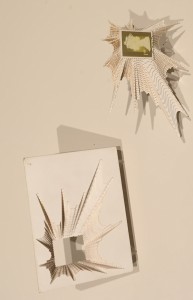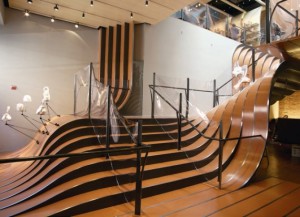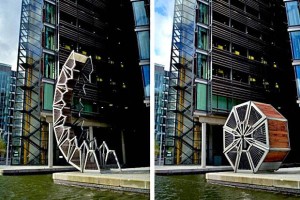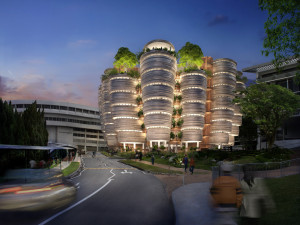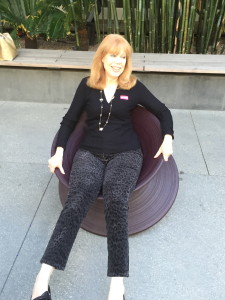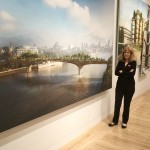 Imagine, if you will, a studio that designs handbags, large public projects ranging from bridges to museums, delicate paper Christmas cards, giant public sculptures with thousands of exquisite pin lights, and playful rotation-molded chairs that are great fun to sit and spin on – trust me, I sat and nearly spun out of control!
Imagine, if you will, a studio that designs handbags, large public projects ranging from bridges to museums, delicate paper Christmas cards, giant public sculptures with thousands of exquisite pin lights, and playful rotation-molded chairs that are great fun to sit and spin on – trust me, I sat and nearly spun out of control!
That’s exactly the work that London-based Heatherwick Studio has done – and we’re lucky here in Los Angeles because we can see an excellent – and free – exhibit of this inventive and unique design enterprise at the Hammer Museum in Westwood. The show, “Provocations: The Architecture and Design of Heatherwick Studio,” is on display until May 24.
Those of you who know me are well aware that I’m generally not a big fan of contemporary architecture – give me a lush Baroque palace any day! However, this show may just have changed my mind a little about contemporary architecture and design. Most of Heatherwick’s designs are beautiful, thoughtful, and fun – all the things that I find lacking in so many contemporary concrete abominations.
I encourage you to go see the exhibit to get the full picture, but I will talk about a few of the highlights for me.
The studio’s Rolling Bridge near London’s Paddington Station is as beautiful when spanning the channel as when raised or rolled up into a ball.
In Longchamp’s Manhattan flagship, Heatherwick has created a staircase that is like no staircase you’ve ever seen – it’s a curving, terraced “landscape” of steel-plate ribbons designed to draw shoppers upstairs. It demonstrates a creative reinvention of the use of materials and of space.
The design for the Museum of Contemporary African Art – a reinvention of the historic Gran Silo at the Victoria & Alfred Waterfront in Cape Town, South Africa – is made up a lot of concrete, but the central circulation space creates a cathedral-like atrium filled with light from a glass roof. I particularly like the addition of pillowed glazing panels inserted into the existing geometry of the upper floors, which will bulge outward as if gently inflated.
Not everything is successful, in my opinion. The Learning Hub for Nanyang Technological University in Singapore – which draws together 56 tutorial rooms – is too dark and, I fear, might be too noisy which, as a teacher, I can tell you is anathema to learning.
The “Hairy Building” in London, which was never built, was an attempt to cover up a soulless building with 6,000 optical hairs in the building’s façade. But as designed, it looks more like someone stuck black porcupine quills onto what is still clearly an ugly structure. (The expression “you can’t put lipstick on a pig” comes to mind here. And I love pigs.)
The exhibit is enhanced by small information plaques that pose, and answer, questions, such as: “How can a big new development relate to its surroundings?” (A key question that, in my opinion, some ego-driven “starchitects” don’t care about.)
Go see the exhibit for yourself – and let me know what you think!



